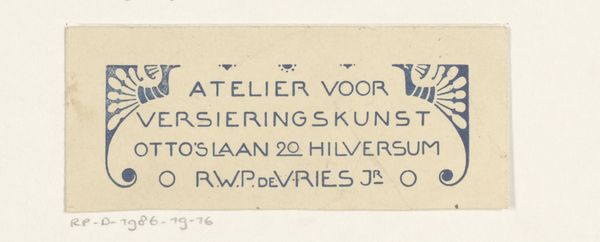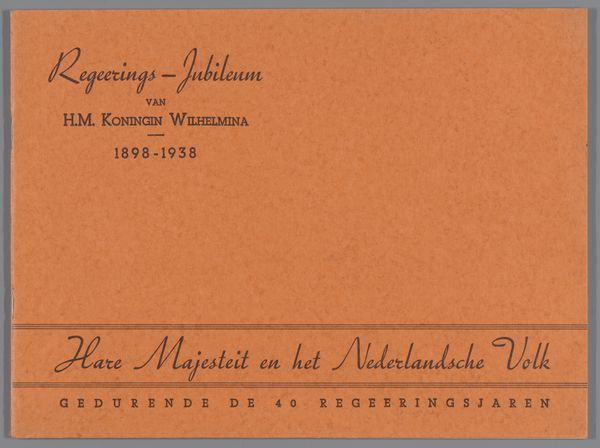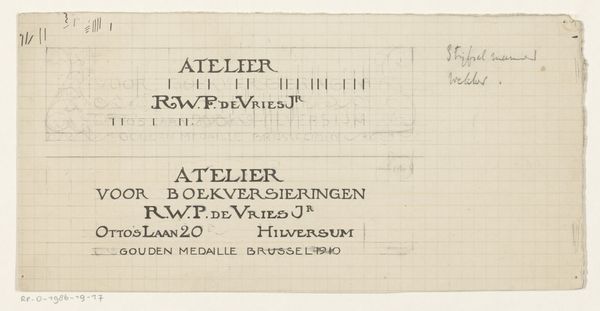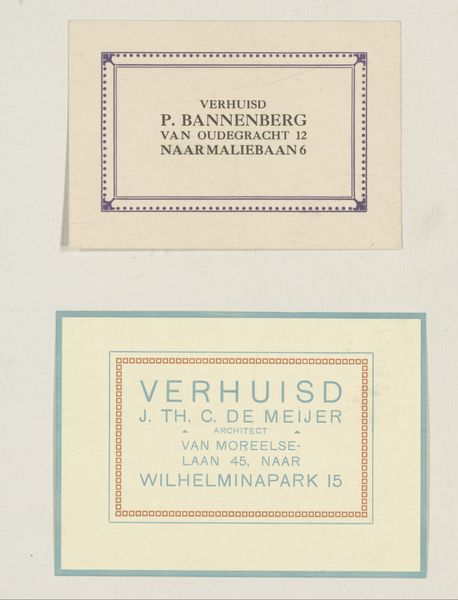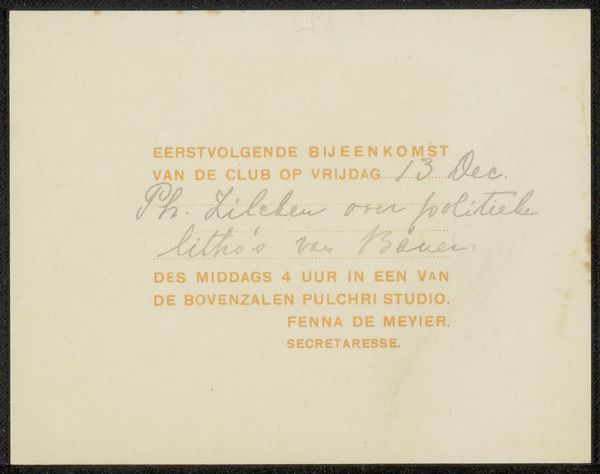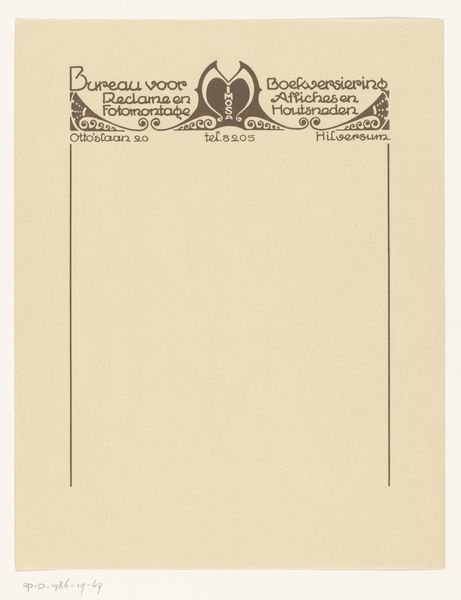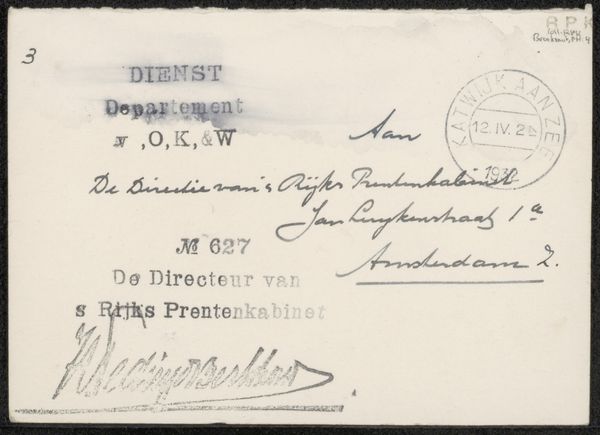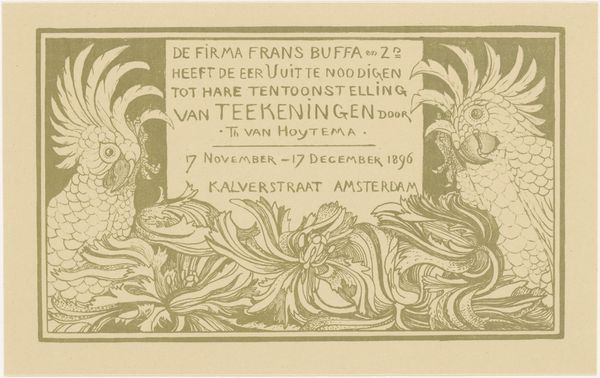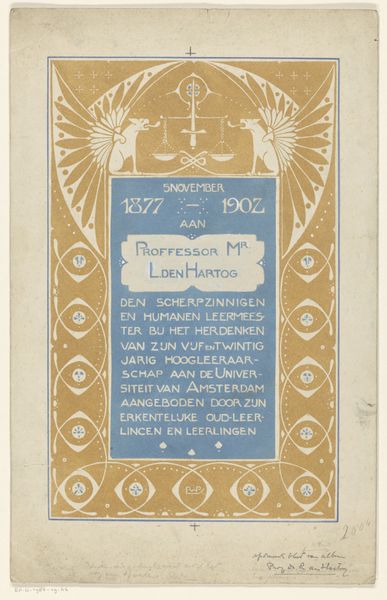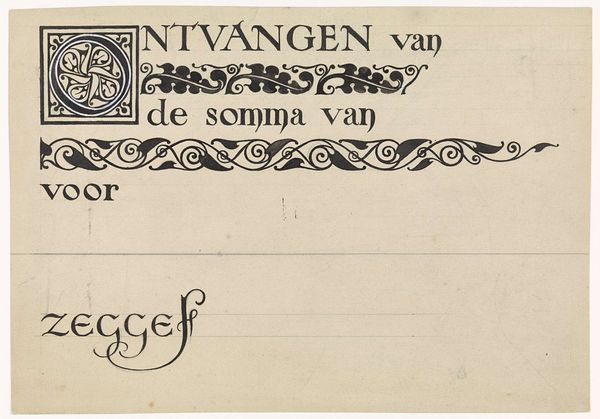
Visitekaartje van Bureau voor Illustratie, Boek- en Sierkunst Mimosa 1884 - 1952
0:00
0:00
graphic-art, typography, poster
#
graphic-art
#
art-nouveau
#
typography
#
poster
Dimensions: height 60 mm, width 98 mm
Copyright: Rijks Museum: Open Domain
Curator: Let’s have a closer look at this "Visitekaartje van Bureau voor Illustratie, Boek- en Sierkunst Mimosa"—a visiting card dating from sometime between 1884 and 1952 and designed to advertise an illustration bureau. My initial impression is one of refined restraint; the muted colors give it a sort of old-world formality. Editor: It's interesting how the production of art, even its promotion, can be seen as art itself here. The choice of simple typography and colors reflects a functional approach to communicating information in an accessible and affordable way. Curator: Agreed, and that is what strikes me. This card makes potent use of symbolism despite being relatively pared down. Notice the interwoven 'M' within the central graphic—undoubtedly a reference to ‘Mimosa’, lending the design an almost heraldic quality that conveys brand identity. The script dances between clarity and flair. Editor: Exactly, there’s no superfluous design, it simply conveys its function effectively. By examining materials and techniques we see a clear prioritization on clear printing in a time with limited widespread availability and use of different processes or mediums. Curator: We're seeing a business embracing art nouveau aesthetics to associate itself with current styles of visual culture. Even a simple business card aims to create an atmosphere! The implied message is clear; this bureau will bring artistry into commercial endeavors. Editor: And we also see the emergence of specialization within the field; a "bureau" dedicated to illustration, book arts, and decorative arts signifies increasing professionalization within the art industry and labor divisions, moving art closer to being an actual form of industry. Curator: That’s right—and there is a deeper echo. The very act of commissioning such a design points to evolving modes of professional self-representation. It shows an attention to crafted image that was becoming crucial in connecting businesses with audiences. Editor: Indeed. Thinking about it, this little card says so much about the shifts in cultural attitudes to artistic labor at the time. Curator: It definitely captures the transition into more deliberately branded communication. The symbolic language still speaks clearly to us, even now. Editor: Well said, by considering material history alongside social changes we can read so much out of the piece.
Comments
No comments
Be the first to comment and join the conversation on the ultimate creative platform.

